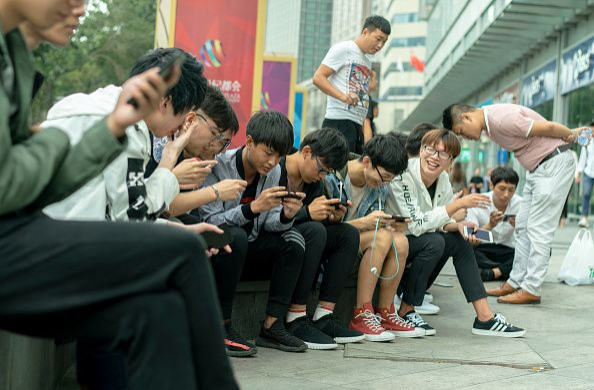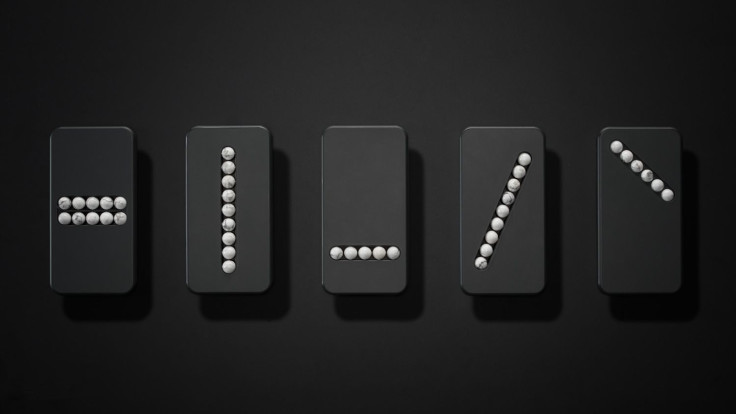Phone Substitutes To Cure Smartphone Addiction: Why We Obsess Over Touchscreen Devices

Smartphones have taken over the world. From being essential tools for communication they have morphed into essential tools for survival, bounding over every technological hurdle placed in its way.
Mobile phones revolutionized communication by paving way for pocket-friendly voice call machines. From then on, they have been embellished with so many add-ons that have made them an indispensable companion in our daily lives.
Often times, millennials are found walking around like people straight out of a Wachowski twins movie, with a phone in hand awaiting instructions for their next move from a guiding being from above the clouds.
The addiction is real. The mini heart attack moment we have when we cannot find our phones is proof enough of our dependence.
Now, Austrian designer Klemens Schillinger has created a device to help smartphone addicts cope in its absence. He has named it the Substitute Phone.
Schillinger designed five facsimile phones, made of black polyoxymethylene plastic, with stone beads embedded on the surface. The idea is to allow users to replicate familiar actions, such as scrolling, pinching, or swiping. The goal is to use it as a coping mechanism for someone trying to check their phones less.

“More and more often one feels the urge to check their phone, even if you are not expecting a specific message or call. These observations inspired the idea of making a tool that would help stop this ‘checking’ behavior," Schillinger said, according to Fortune.
Smartphone addiction is real and scientists have been warning us for years. In 2015, 4 out of 10 teens slept less than seven hours a night, up 58 percent since 1991 and 17 percent more than in 2009, when smartphone use became mainstream, according to a study in the journal Sleep Medicine.
Another study conducted by the State University of New York said excessive smartphone use leads to problems like sleep loss, with females especially susceptible.
"Our smartphones have turned into a tool that provides short, quick, immediate satisfaction, which is very triggering," said Isaac Vaghefi, assistant professor of management information systems at Binghamton University-State University of New York and lead of the study, in a press release.
"Our neurons get fired and dopamine is being released, and over time this makes us acquire a desire for quick feedback and immediate satisfaction. This process also has contributed to developing shorter attention spans and being more and more prone to boredom."
Smartphone apps have greatly contributed to the functionality of these devices. Accessing most websites is so much easier with an app, but they also flood your phone with unwanted updates and notifications.
According to this report by Fortune, apps on smartphones have interactive interfaces to create a positive user experience that is linked to a release of the neurotransmitter dopamine in the brain. These spikes in dopamine cause users to recurrently go back to unlocking their phones and checking for updates from these apps. The notification color on Facebook, autoplay features on YouTube and Netflix, and the pull-to-refresh mechanism of Twitter use the same trick to keep users' coming back to them.
In-fact, several silicon valley software developers, including Roger McNamee, credited with introducing Mark Zuckerberg to Sheryl Sandberg and a major investor in Facebook and Google, has compared these social media sites to “tobacco companies and drug dealers,” in the report.
In the same report, James Williams, one of the architects of Google’s advertising business, says the company’s attention-seizing methods are changing people’s brains by privileging “our impulses over our intentions.”
Complications like "nomophobia" and "Phantom Pocket Vibration Syndrome" have already stemmed from excessive mobile phone use. Short for "no-mobile-phone phobia," nomophobia this is exactly what it sounds like: the fear of being without your cellphone. According to a study of 1,000 people in the U.K., 66 percent of the population fears losing or being without their phones at any given time.
The effects of being constantly glued to your smartphone screen has led to the development of anti-addiction tools like those for cigarettes.
These plastic phone-sized things feel just like a phone and have beads on them that when rolled, mimic unlocking and other common touch-screen phone functions. We have reached a point where people are being asked to put down their phones during live-performances and even lectures, the advent of such anti-smartphone addiction devices marks the growth of our dependence of technology and maybe offers a glimpse of our technology-tied future.
<iframe width="560" height="315" src="https://www.youtube.com/embed/zJZTe3AiMLY" frameborder="0" allowfullscreen></iframe>
© Copyright IBTimes 2025. All rights reserved.





















